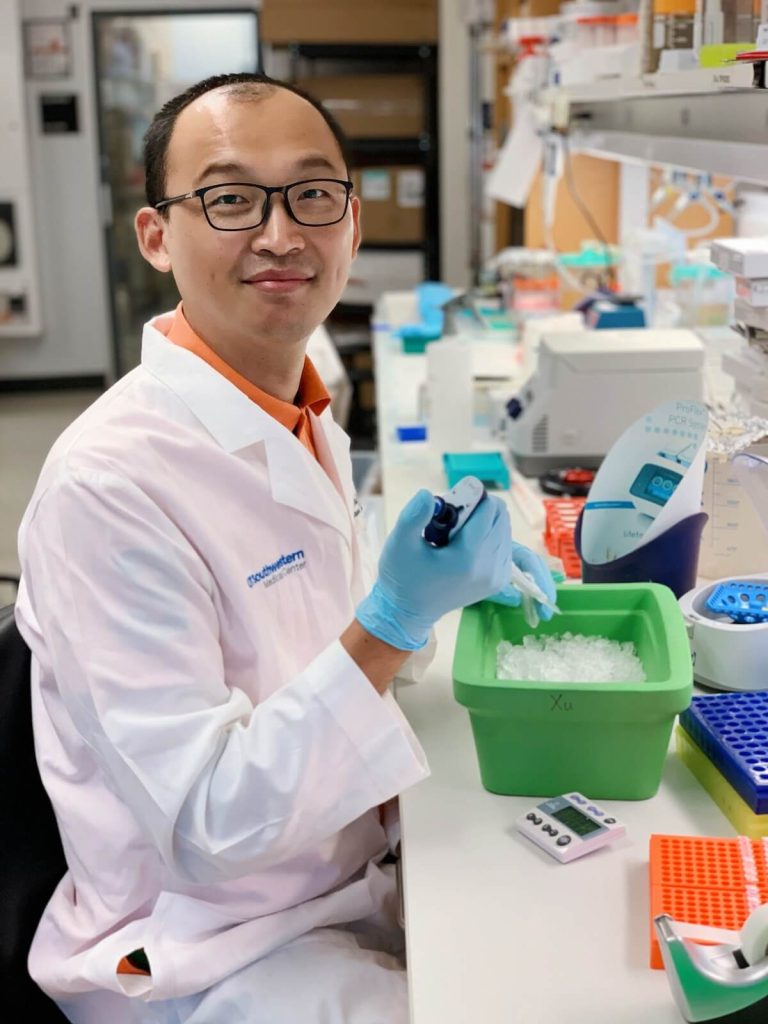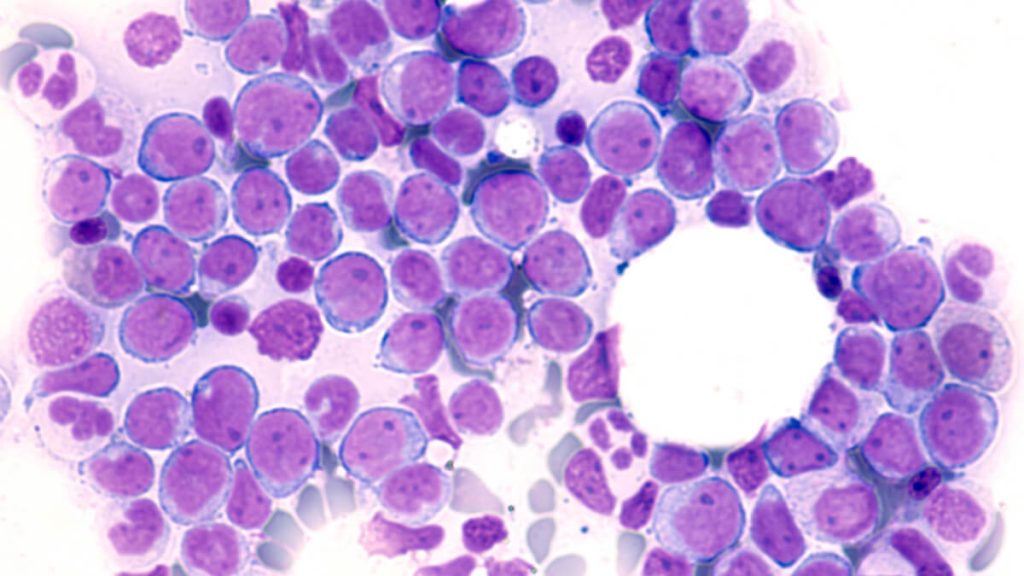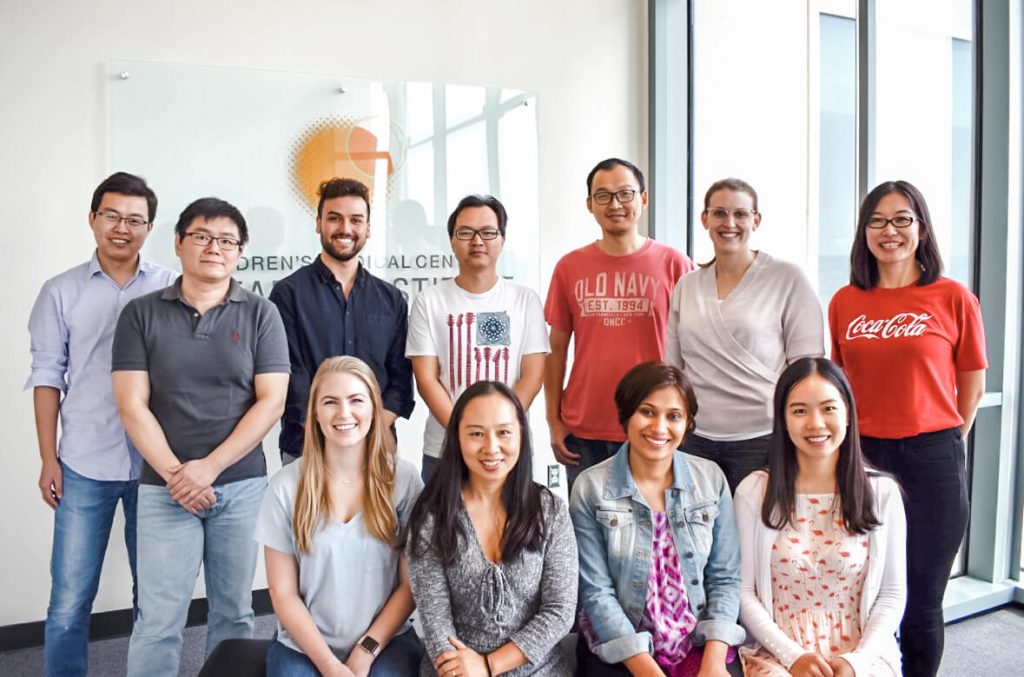June 30, 2020
Zhimin Gu is a postdoctoral fellow in the Xu lab and a member of the Moody Medical Research Institute. In CRI, he is working to discover metabolic vulnerabilities in acute myeloid leukemia (AML) that can be targeted to help prevent leukemia progression.
What are you researching?
My research focuses on understanding how altered metabolism contributes to acute myeloid leukemia (AML) development. We know from previous research that most cancer cells, including AML, have unique metabolic features compared to healthy cells and that altered metabolism significantly contributes to the development and progression of AML. Using mouse models and samples from leukemia patients, I am exploring the metabolic mechanisms that contribute to AML.
Specifically, I am studying how branched-chain amino acids (BCAAs) metabolism differs in normal blood cell development and leukemia. BCAAs are essential amino acids, and in healthy tissues, their metabolism plays a critical role in normal cellular processes. In cancer, BCAA metabolism can be rewired as a result of epigenetic changes or mutations to promote cancer development. Recently, I discovered that Polycomb Repressive Complex 2 (PRC2), a protein known for its ability to silence gene expression, can reprogram BCAA metabolism by regulating the expression of BCAT1 gene.
The BCAT1 gene is usually turned off during normal blood cell development, but I found mutations of PRC2 components can activate the BCAT1 gene in leukemia cells, thereby promoting BCAA production and leukemia development. This is an exciting finding, and I am interested to further explore the metabolic vulnerabilities in BCAA metabolism of AML that could be exploited to prevent leukemia progression.


How do you think your work will help patients?
By exploring the epigenetic and metabolic liabilities of myeloid leukemia, we can not only understand the disease better but also reveal potential therapeutic strategies that can be used in the clinic. Our latest discovery, which was published in Cancer Discovery, identified two potential vulnerabilities: EZH1, a homolog of EZH2, and BCAT1. Most importantly, what we discovered in the paper suggests that restricting BCAAs via diet modulations could potentially affect leukemia progression in certain patients.
How did you end up in CRI?
I have a longstanding interest in the biology of hematopoiesis and leukemia. When CRISPR and next-generation sequencing came out, Jian Xu had just started his lab in CRI and was using many of these cutting-edge technologies. Combining these outstanding approaches with the type of research he was focused on made me realize his lab would be an exact fit for me and provide the type of training I would need to pursue my career goals. After meeting with Jian and his lab members, I was impressed by both how brilliant of a scientist he was and how he was a great mentor who inspired the people in his lab. I was honored to join his lab and am thankful to work with everyone in CRI. People here have so many different experiences and areas of focus, so we all learn a lot from each other.


What’s your favorite spot in CRI?
My favorite spot in CRI is the kitchen next to Jian’s and Hao’s office. Our lab always has lunch together there. We talk about all types of things, including our science, as well as share stories about our families. Most of the time we share our homemade food, and the countertop is usually full of lot of different things people have brought in. You have to be quick though because the delicious food always goes very fast.
What do you like to do when you’re not in the lab?
I really enjoy fishing when I am not in the lab. I like to go with my friends to Lake Lewisville and catch bass and crappies and then cook them up afterward. On the day fishing is planned, I’m always happy to wake up even earlier than weekdays require. Casting for fish lets me stretch and strengthen my pipetting arm! Outside of fishing, I love biking and hiking with my kids in the parks around DFW but especially at Sam Houston Trail Park.

© 2025 Children’s Research Institute Dallas Texas | Privacy | Site Policies